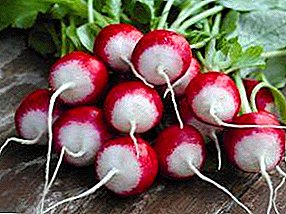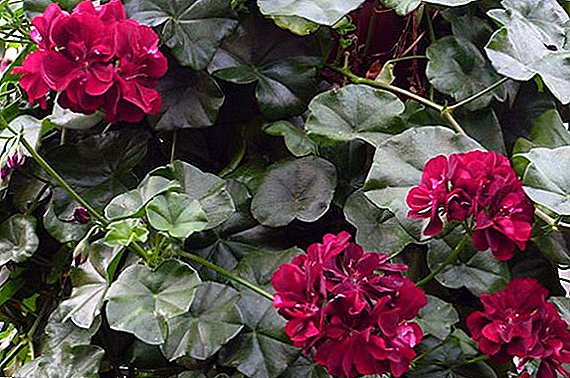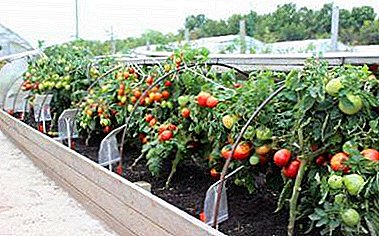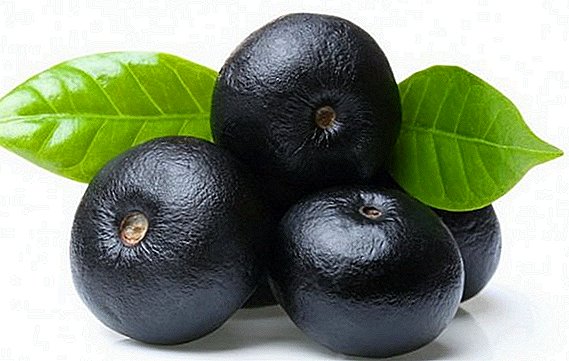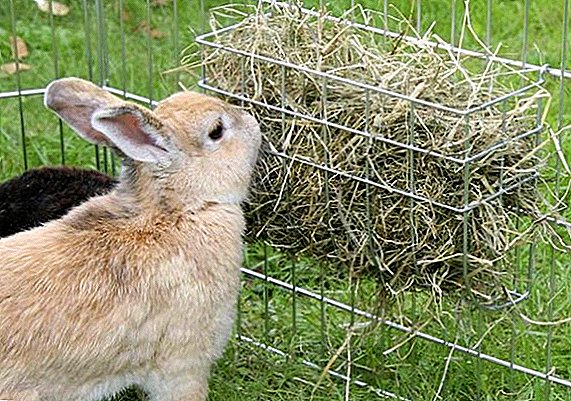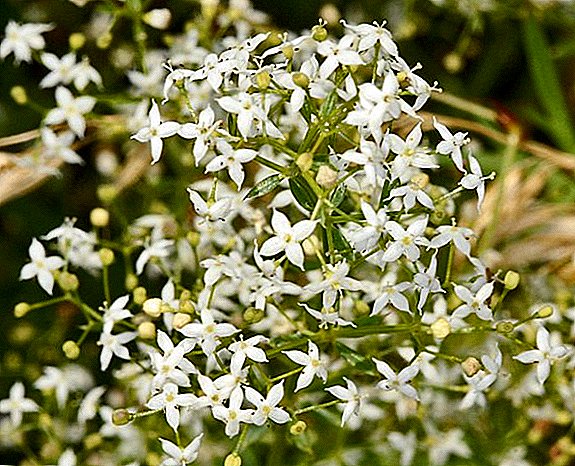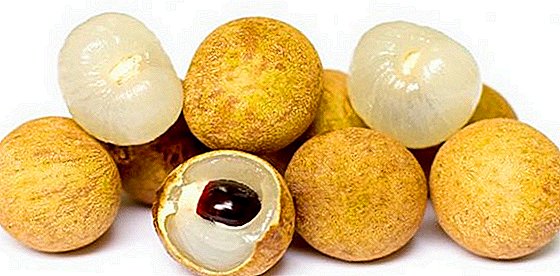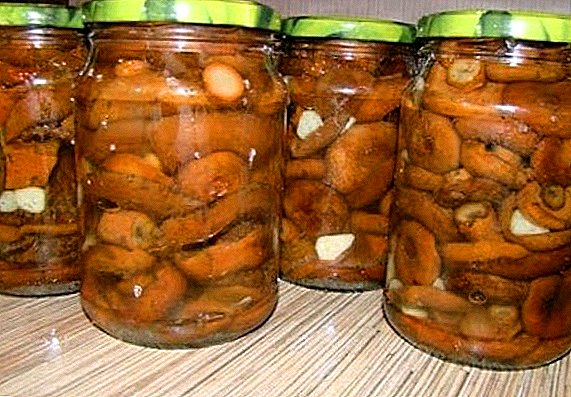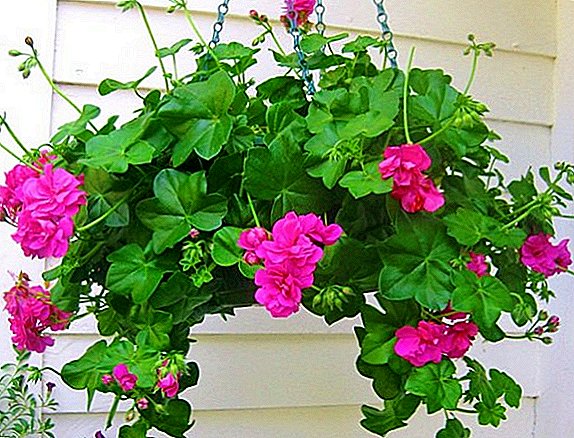 The Ileum Pelargonium (geranium) has gained popularity among the lovers of ampelous plants due to its flowering, which is able to decorate not only an apartment, but also a garden. In the article we will tell you about the types and distinctive features of ileum pelargonium, as well as about all the intricacies of its cultivation on the site.
The Ileum Pelargonium (geranium) has gained popularity among the lovers of ampelous plants due to its flowering, which is able to decorate not only an apartment, but also a garden. In the article we will tell you about the types and distinctive features of ileum pelargonium, as well as about all the intricacies of its cultivation on the site.
Description and Distinctive Features of Ivy Geranium
Pelargonium Ivy (Pelargonium peltatum) got its name from the five-lobed smooth leaves that resemble ivy leaves. It is easily recognizable thanks to its flower-deciduous cascades with stems up to two meters long.
The plant has a semi-shrub appearance, in the inflorescences from 6 to 15 double or semi-double flowers of white, pink, lilac or red color are combined. They are formed in the axils of the leaves, the color of which depends on the variety.
Description and photos of popular varieties
This plant has many varieties, the most common of which are:
- Amethyst - flowers are large, have amethyst-purple color, turning into a crimson. The leaves are green, shiny.

- Crocodile - leaves have an original color, bright yellow veins are well visible on them. Flowers coral pink.
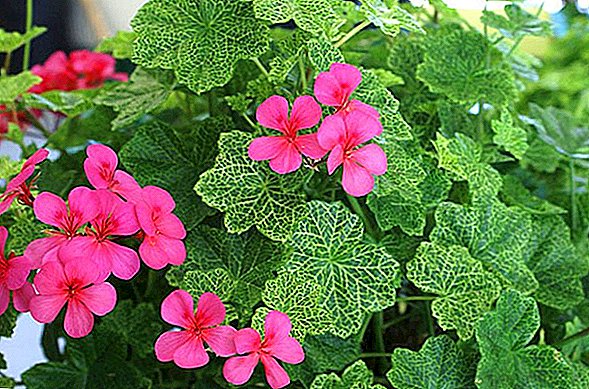
Learn about the care of ampel, blood-red, tulip, royal and magnificent garden geraniums.
- Jacky gauld - Flowers are snow-white, collected in lush inflorescences. The leaves are shiny, emerald color.

- Ice rose - flowers are snow-white with a lilac shade, have a rosy shape.

- Rouletta - white flowers with bright crimson edging.
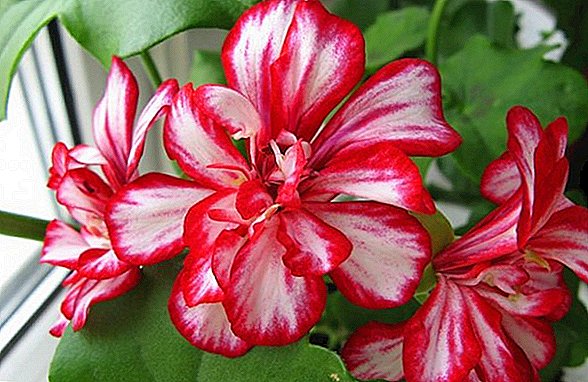
- Mrs. Martin - the flowers are large, with pink and lilac petals.

- "Rhapsody" - the flowers are dark beet, on the upper petals the color is more saturated.

Growing geraniums in the country from seeds
One of the methods of growing ileum pelargonium in the country - with the help of seeds. It requires careful, painstaking work and is used only by experienced gardeners.
Did you know? Pelargonium based oil is widely used in aromatherapy. It has a calming effect and improves mood.
Landing dates
In order to decorate the summer cottage with the ivy geranium, it is necessary to sow the seeds in the spring, so that in early summer the plants are strong and can be transplanted into the open ground. 
Selection and preparation of seeds
When choosing seeds should pay attention to such important points:
- Good pelargonium seeds have a rich brown color.
- Seeds are large, oblong, with small depressions on the sides.
- The shell should be leathery and dense.
Learn more about how to grow your own pelargonium from seeds, as well as how to care for ileum pelargonium at home.
Before sowing, it is necessary to slightly cut the surface of the seeds with a nail file to make their shell thinner. Then soak the seeds for a day in water at room temperature, then place for 30 minutes in a weak solution of potassium permanganate. After these procedures, the seeds are transferred to a clean, dry cloth to dry.
Soil requirements
There are no special requirements for the composition of the soil, its composition can be varied. You can buy seedlings for seedlings in specialized stores or use peat pots.  You can also prepare the soil yourself, for which you should take equal amounts of turf soil, sand and peat.
You can also prepare the soil yourself, for which you should take equal amounts of turf soil, sand and peat.
Sowing scheme
Seeds need to be sown at a distance of 5 cm from each other. They are planted no deeper than 0.5-1 cm, sprinkled with earth and sprayed with water from a spray bottle. The containers are covered with a transparent film and put in a place with a temperature of 22 ° C to 25 ° C.
Seedling care
Sprouting seedlings fast, it can be observed after 2 weeks. After 3 weeks after the appearance of the first leaves, geranium can be transplanted into separate pots with drainage at the bottom. Soil with seedlings watered every 5-6 days. For ventilation, it is necessary to periodically open the film for 2-3 hours.
You will probably be interested to read about the healing properties of pelargonium.
Video: ivy-shaped cultivation and care of pelargonium
Important! Transplanting the ivy geranium into separate containers is necessary along with a clod of earth to secure the roots.Stop seedlings need to be careful not to damage the root system. 2 weeks after transplantation, pelargonium must be fed with nitrogen fertilizers, which are applied under the root.
Seedlings intended for planting in the country, needs hardening. To do this, flowerpots with plants in warm weather should be carried out on the air.
How to propagate pelargonium cuttings
When breeding pelargonium cuttings can be in a short time to get a beautiful bush.
Rules and terms of preparation
Cuttings are best harvested in the spring. They must be cut from the side and apical shoots. The cut off part must be at least 5-7 cm, with 2-3 leaves. Then they should be treated with carbon powder and dried for 12-15 hours.
Video: features of cutting pelargonium
Rooting and planting cuttings
Rooting is carried out in loose soil, where shoots need to be planted to a depth of 3-4 cm. In a month, the root system will become stronger, and the geranium can be transplanted into separate pots.
Conditions for growing and caring for ileum pelargonium
In May, after the frosts have passed, ivy pelargonium can already be planted in open ground, where it will spend time until the beginning of autumn.
Weather conditions and temperature
The area where pelargonium grows should not be windy, so that the fragile plant is not damaged. The temperature should be at least 18 ° C. Severe cooling is not terrible pelargonium, but you should protect it even from small frosts.
Optimal lighting
Geranium prefers an open and lighted territory. But at the same time it should be protected from the direct rays of the sun, the diffused light is optimal for it. 
Important! In case of insufficient lighting, pelargonium does not bloom, in this case its stems will grow in height.
Watering and soil moisture
The soil should always be wet, for irrigation it is better to use rain or settled water. In case of overdrying of the soil, the leaves of the plant will become rare, and the inflorescences may not even form.
How to feed pelargonium
For the pomp and density of the bush pelargonium must be fed fertilizers with a high content of phosphorus. It is brought into the ground before flowering, at the stage of formation of the bush.
Fertilization containing potassium will help form a large number of large inflorescences. It is necessary to make such fertilizers 1 time in 2 weeks during the formation of inflorescences and during flowering.
Trimming features
Autumn pruning is done after completion of flowering; dry stalks, flowers and leaves are removed.  Pruning in the spring is necessary when too much growth or improper formation of the bush after wintering. The best time for this procedure is from the end of February to the beginning of March.
Pruning in the spring is necessary when too much growth or improper formation of the bush after wintering. The best time for this procedure is from the end of February to the beginning of March.
We recommend that you read about how to properly cut geranium for lush flowering, and why geranium leaves turn yellow.
Cut pelargonium need a razor blade or a thin knife, the cut must be done over the sheet outer node. The cut must be filled with charcoal.
How to care for pelargonium in winter
In autumn, pelargonium must be returned to a room that should not be too warm. The temperature of the content should be between 7 ° C and 15 ° C.
Did you know? Putting pelargonium leaves in a jar of jam, you can avoid the appearance of mold on the surface of the jam.
During this period, watering should be reduced so that the roots do not die. It is necessary to moisten the soil only slightly, without touching the leaves and stems. Geranium can winter on a cool window-sill inside the house, with the onset of heat, it can be planted on the dacha. 
Possible difficulties, diseases and pests of the plant
When growing Ivy Pelargonium, you may encounter such difficulties:
- Yellow edges of the leaves. This is caused by improper care: abundant watering, high temperature or lack of fertilizer.
- Rotten stems and faded leaves. In this case, reduce watering and remove damaged stems.
- Stunted and sluggish leaves. This may be due to a lack of nitrogen in the soil. It is necessary to check the acidity of the soil, ideally it should be no more than 5.5 pH.
We advise you to read about how to independently determine the acidity of the soil, as well as how to deoxidize the soil on the site.
- Lack of flowering. This can lead to stagnant water. It is necessary to reduce watering and make sure that the water does not stagnate.
The most common diseases affecting pelargonium:
- Gray rot. Characterized by brown spots on the plant and the lack of flowering. When observing the first signs of a disease, geranium should be treated with systemic fungicides.
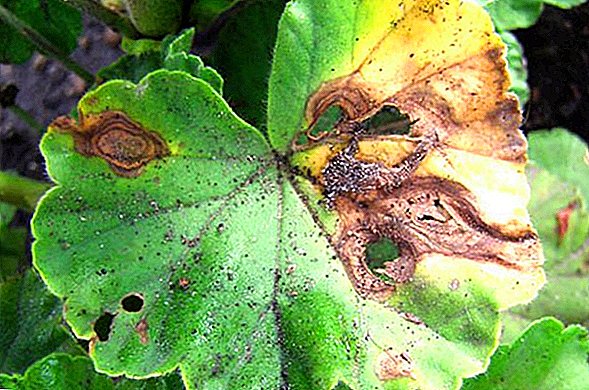
- Alternaria Along the edges and on the surface of leaves, spots of brown color with a light core appear. There is no bloom, the leaves turn yellow and dry. It is necessary to treat the plant with “Scor” or “Ridomil Gold”.
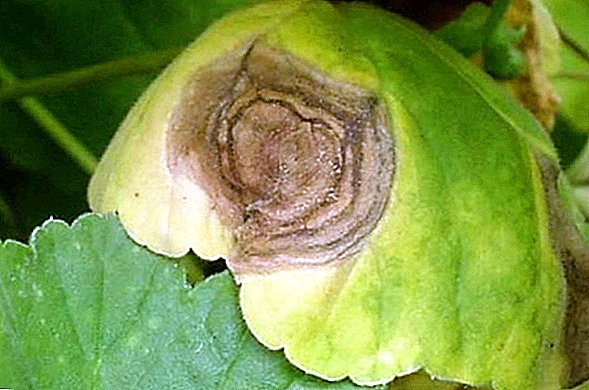
- Rhizoctonia rot. Dark spots appear at the bottom of the stem, which stretch up to 25 cm. At the first signs of this disease, it is necessary to treat the plant with the preparations Vitaros, Fundazol, and Rovral.
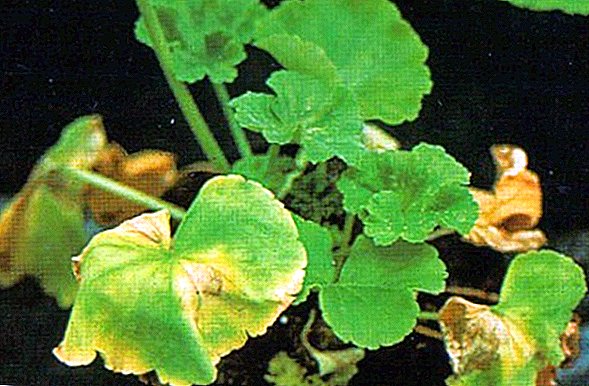
Your garden will also be beautifully decorated with flowers such as lunik, sparaxis, autumn crocus, gladiolus, lily, hazel grouse, narcissus, tulip, licoris, Ixia, kandyk, allium, zephyranthes, schisantus, trithelia.
With its sharp odor, Ileum Pelargonium scares off insects, but sometimes it can be observed on such pests:
- Whitefly. She settles on the underside of the leaves and sucks the juice out of them. It multiplies rapidly and can destroy the plant. After seeing the whitefly on the plant in a single copy, you need to destroy it manually. If it has already multiplied, it is necessary to treat the plant with potash soap preparations.

- Aphid. At defeat by this insect leaves turn yellow, on them sticky allocations of aphids are visible. To combat this pest will help insecticide, which aims to destroy aphids.

Growing ileum pelargonium and caring for it can be done even by a beginner in this business, not like an experienced gardener. If you follow the rules for the care of this plant, there is no doubt that its flowering, pleasing to the eye, will decorate any part.
Reviews from the network















